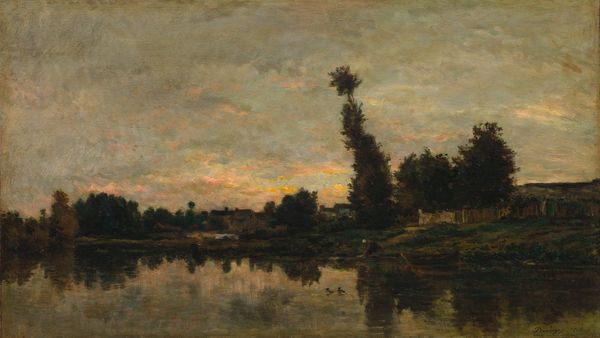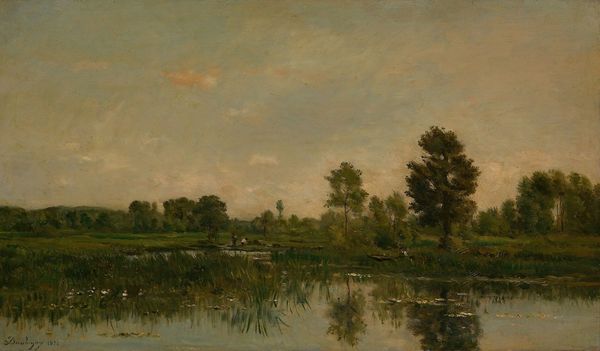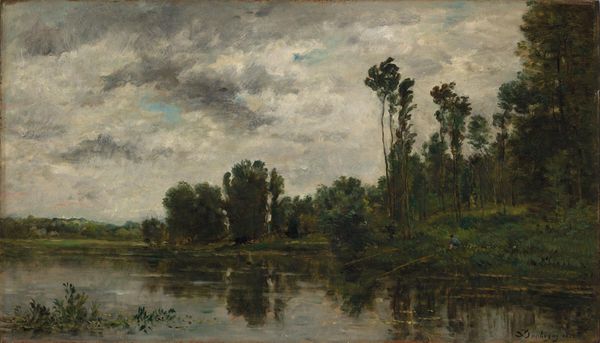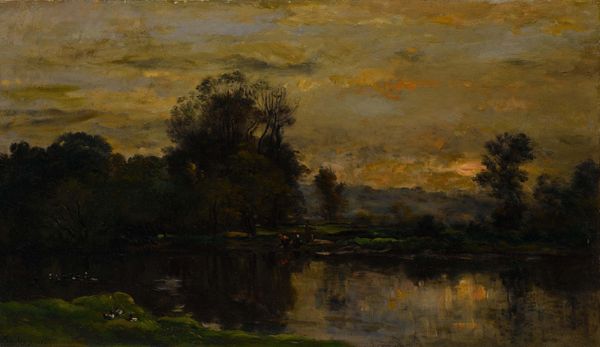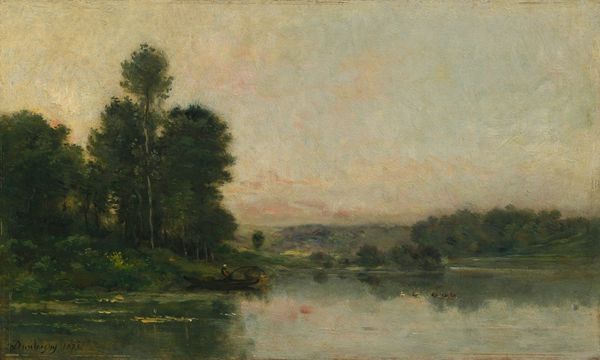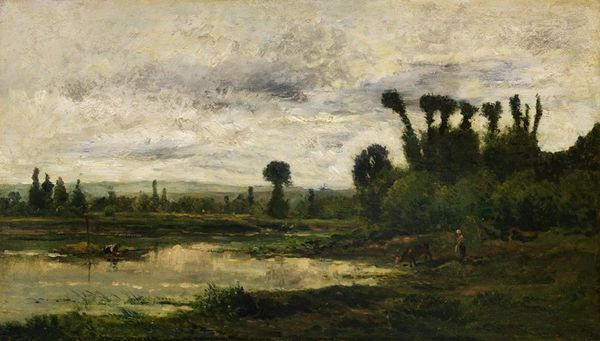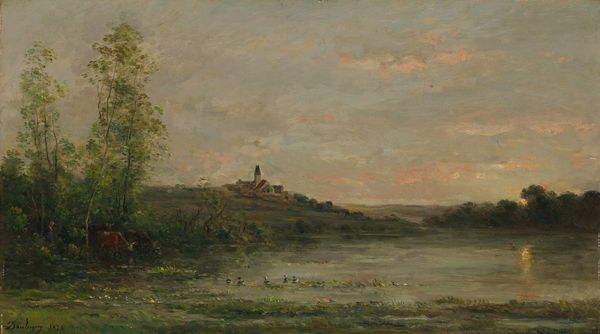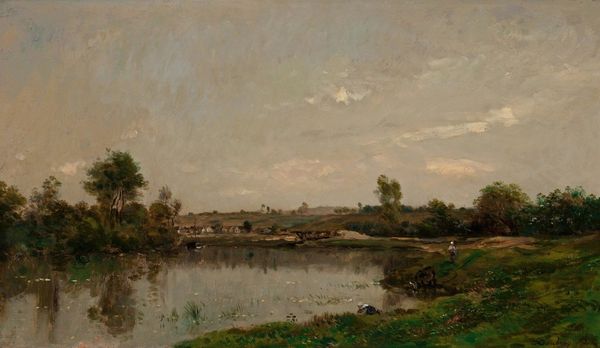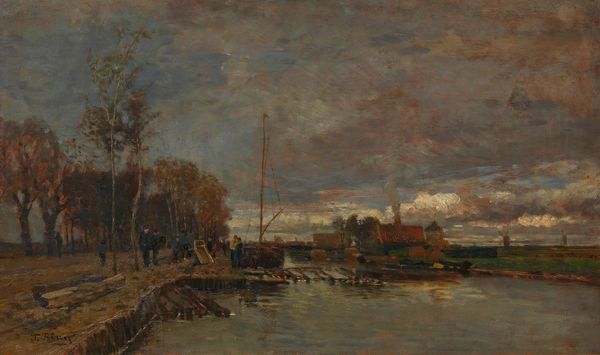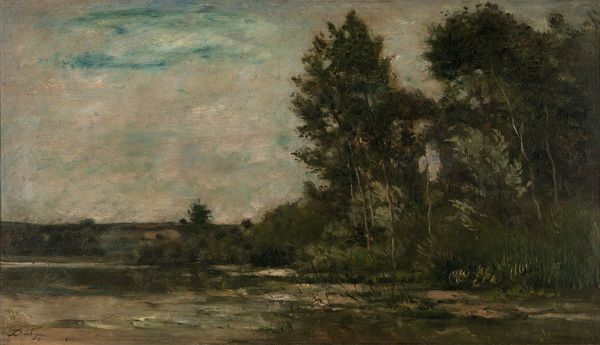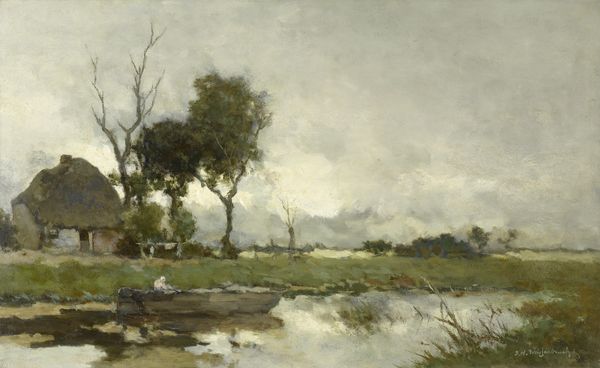
Copyright: Public Domain: Artvee
Editor: So, this is Charles-François Daubigny's *Portejoie on the Seine*, painted sometime between 1850 and 1878 using oil paint. It’s beautiful but sombre. The water and sky almost mirror each other, creating this sense of… weight. What do you see when you look at this work? Curator: Immediately, the tonal arrangement strikes me. Observe how Daubigny employs a restricted palette, dominated by earth tones and muted greens. Consider the structural integrity established through the horizontal bands: the river, the land, and the sky. Does this layering effect create a sense of compression or expansion for you? Editor: Compression, I think. It feels quite dense. Like the sky is pressing down on the landscape. Curator: Precisely. And what of the brushwork? Notice the varying textures: the smooth reflections on the water contrasted with the impasto in the sky. These variations in materiality contribute to the dynamism of the composition. Are these brushstrokes evocative or arbitrary, in your opinion? Editor: Evocative, definitely. The strokes in the sky really capture the movement of the clouds. Curator: Agreed. And how do these formal elements—the colour, the composition, the brushstrokes—interact to produce meaning in this landscape? Are we simply observing nature, or is there something more at play? Editor: I hadn't thought about it that way, but it's less a pure representation and more a…feeling? Daubigny uses structure and paint to communicate feeling. Curator: Precisely. It seems the beauty is intrinsic in its artfulness and sophisticated manipulation of pictorial space, rather than being imitative of the natural world. Editor: That makes me see it in a whole new light. Thanks. Curator: Indeed. Viewing the canvas as a site of formal interactions grants a depth previously unconsidered.
Comments
No comments
Be the first to comment and join the conversation on the ultimate creative platform.
